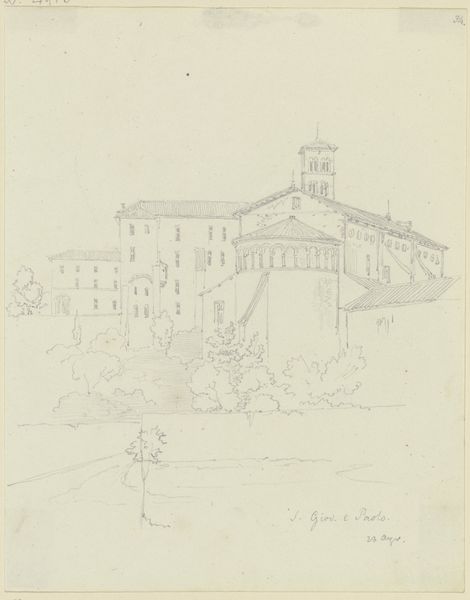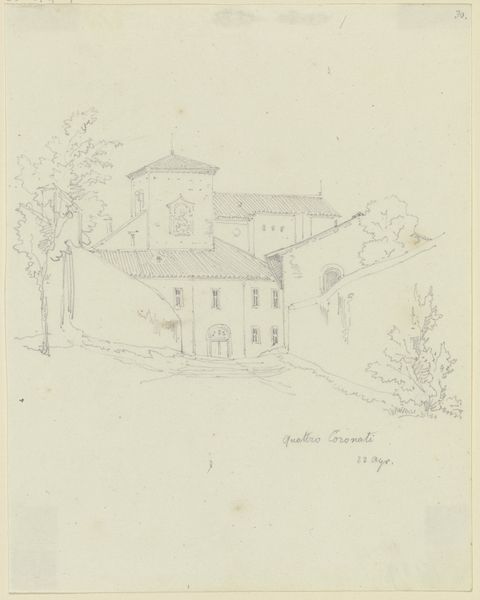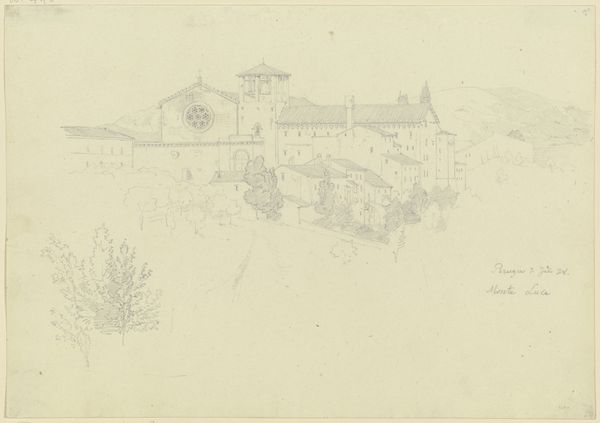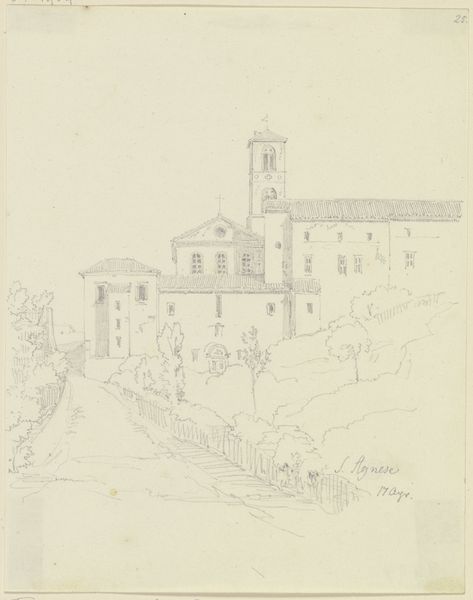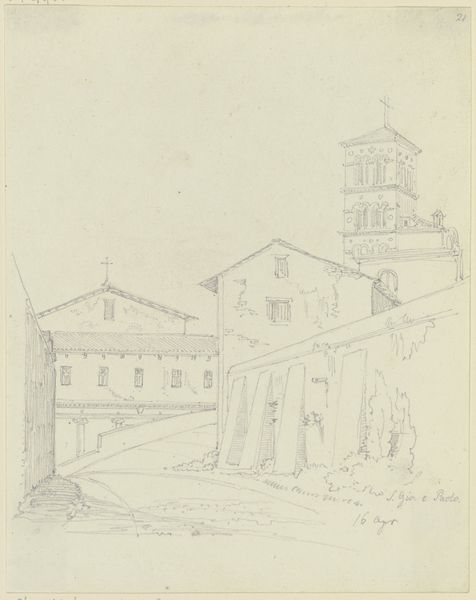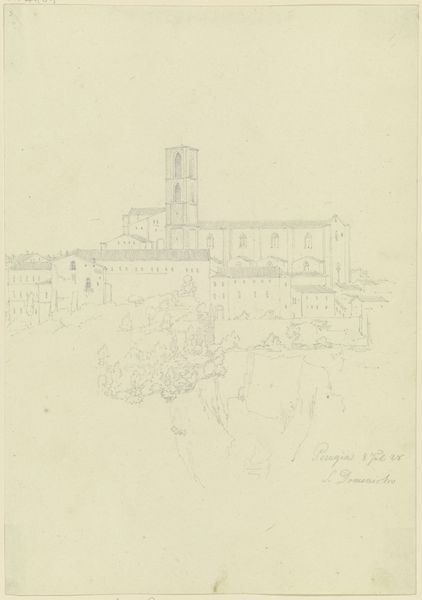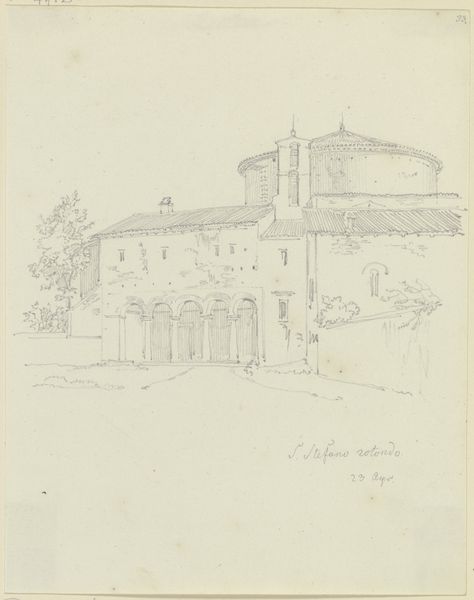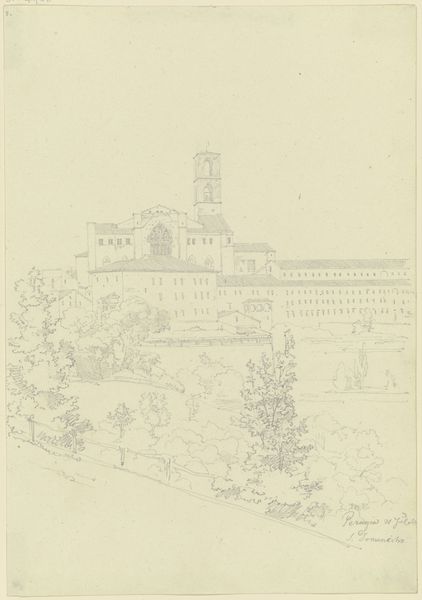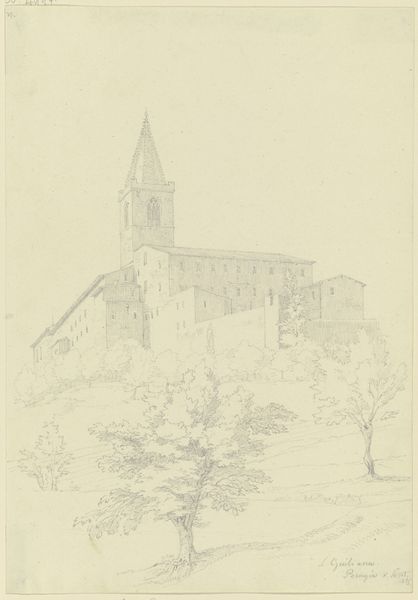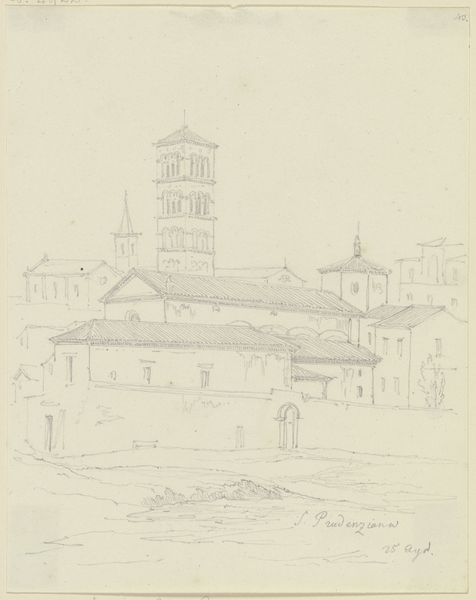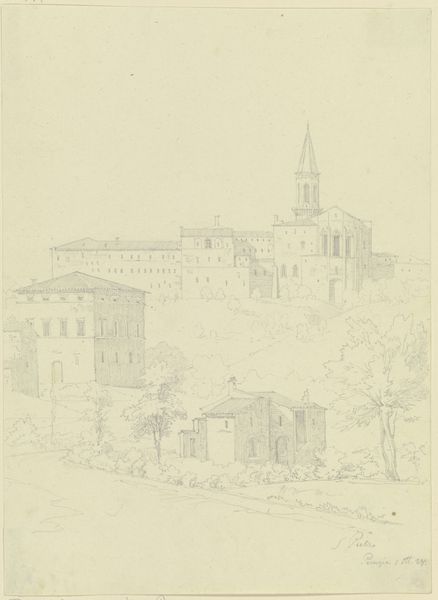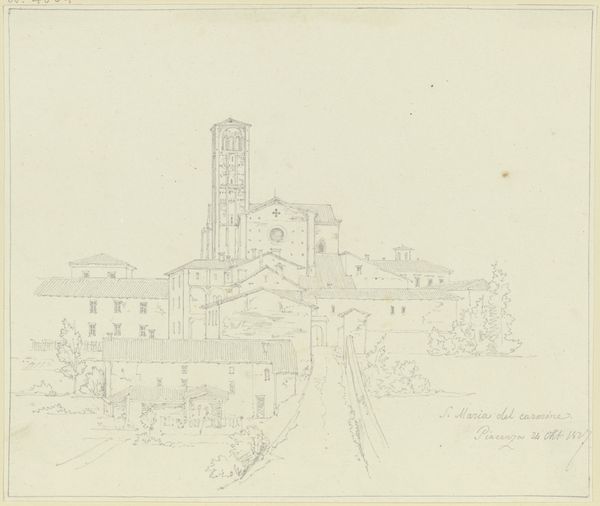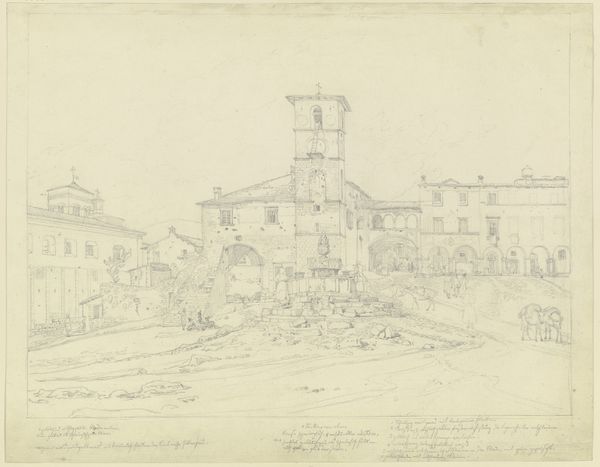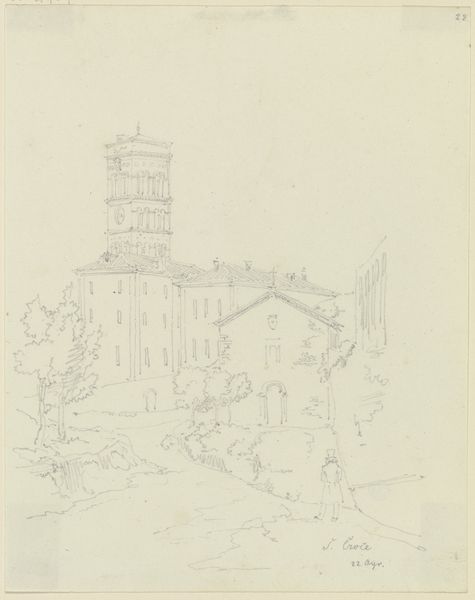
S. Pancrazio, von der Villa Pamphili aus gesehen 7 - 1828
0:00
0:00
drawing, paper, pencil, architecture
#
drawing
#
16_19th-century
#
neoclassicism
#
landscape
#
etching
#
paper
#
pencil
#
architecture
Copyright: Public Domain
Curator: This pencil drawing, "S. Pancrazio, von der Villa Pamphili aus gesehen," by Friedrich Maximilian Hessemer, captures a Roman vista in February of 1828. The Städel Museum holds this delicate rendering. My immediate impression is of faded grandeur. Editor: Yes, it speaks to the picturesque movement and perhaps even anxieties surrounding the shifting socio-political power structures in early 19th century Rome. I'm curious to know, though: why this vantage point? Curator: Note how Hessemer precisely depicts architectural details. The planes of the buildings are clearly defined. His handling of light and shadow, particularly on the cylindrical apse, draws the eye and structures the whole composition. The linear rendering provides objective observation above subjective interpretation. Editor: But even objective observation is subjective. The choice of the Villa Pamphili as a viewing point speaks volumes. The Villa itself was appropriated during the period of the Roman Republic. Depicting St. Pancrazio from the stolen grounds emphasizes a complex history of ownership, power, and perhaps even resistance embedded in the seemingly serene Roman landscape. Curator: You offer a critical framework, absolutely. Yet, let's acknowledge how Hessemer is emphasizing Neoclassical ideals—order, symmetry—qualities inherent within the carefully balanced rendering, rather than imposing modern anxieties upon it. The composition, for instance, embodies balance and controlled artistic license. Editor: Of course, I appreciate Hessemer's technique. The delicate pencil strokes render architectural details with a quiet beauty, yet to ignore that art is made within sociopolitical landscapes silences broader narratives of oppression and perseverance. To examine this image without that understanding is to reduce its relevance in the now. Curator: Perhaps our readings aren't so divergent as they are complementary. Through the structure we've explored in this subtle landscape we also appreciate broader societal dynamics during its time. Editor: Indeed. The formal elements do lead us toward essential inquiries of historical narratives imbedded within its careful line work.
Comments
No comments
Be the first to comment and join the conversation on the ultimate creative platform.
